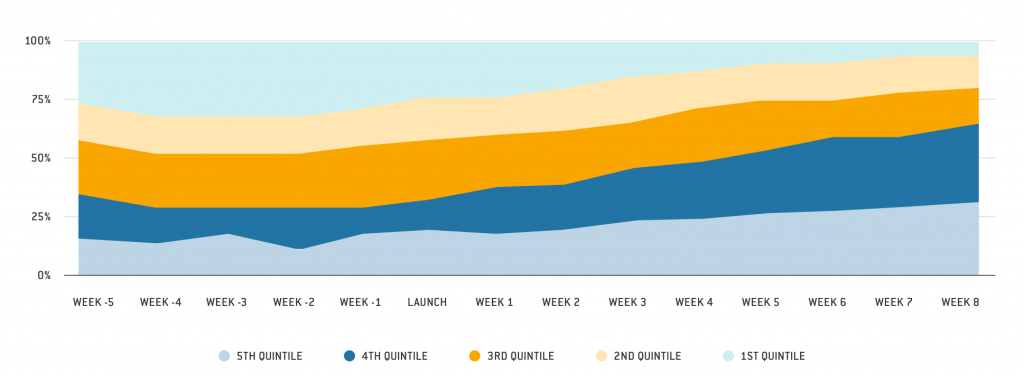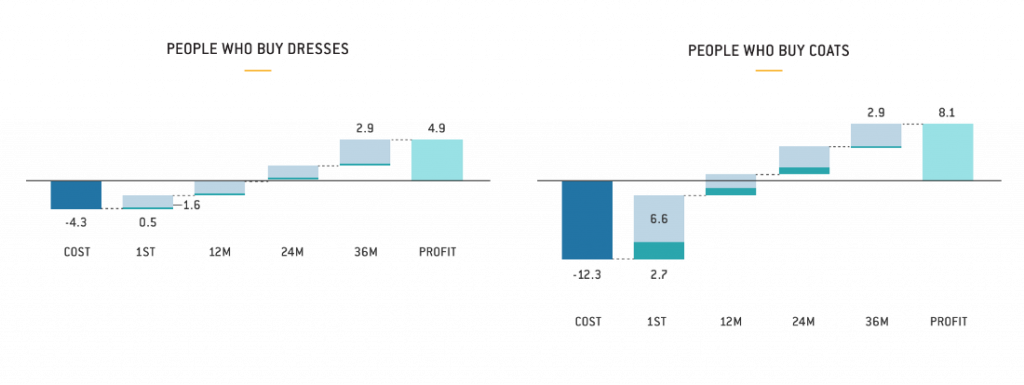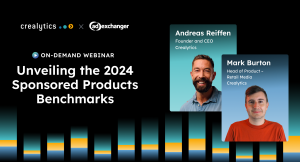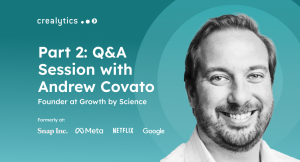Optimizing your campaigns for a fixed (average) CLV will improve your company’s long-term health.
But predictive CLV goes even further. This article explains how foreseeing the value of new customers individually – and using machine learning to mine signals like age, location and gender – can help focus your ad spend on the most profitable ones.
At Crealytics, we’ll warn you about sub-standard performance metrics until we’re blue in the face. You’ll find no shortage of articles explaining why revenue tells a limited story about your company’s health.
We also suggest better alternatives. And Customer Lifetime Value (CLV) is the ultimate alternative. Because unlike efficiency-based metrics (ROAS, ROI), CLV takes your future growth into account.
Refresh: How does Customer Lifetime Value work?
New customers are central to scaling your business. You pay more for the privilege – new customers cost more to acquire– but the future profits they bring in makes this a worthwhile trade-off.
Let’s say you sell coats and dresses. If your coats attract more new customers than the dresses do, you’d still allocate more advertising budget to the coats. This is because the profit generated over a customer’s “lifetime” (say 12 months) will be higher than that from the dresses.
Think about the various elements associated with a transaction. ROAS sucks because it ignores everything beside top-line revenue. ROI might be better, but it still limits you to the present.
But with CLV, the process doesn’t end once you’ve calculated the exact profit margins (by removing returns and other costs). Rather, it allows you to preference new customers by factoring in their predicted future margins, leaving you with a comprehensive CLV value.

From a bid management perspective, you feed this value into your platform and let the AI do the rest. It will assign higher bids to products or keywords with higher earnings.
Adding future profits to new customer orders ensure their earnings are higher than existing ones. Congratulations: your system now assigns higher bids to the products that generate more new customers.
Retailers who optimize for CLV have a good grip on who their new customers are and what they’re worth on average.
In most instances, this knowledge comes from studying their CRM. They opt for a customer cohort analysis, in other words, working out the shared characteristics of people who’ve bought their products.
Combine this with a decent transaction history (the longer the better) assures you pretty decent estimates.
Of course, new customer values will differ depending on the vertical. But the principle is universal. You consider the exact margins and repeat purchases using customer averages.

From fixed to predictive CLV
However, optimizing campaigns for a fixed CLV still risks leaked ad budgets. Basing calculations on historic averages can be misleading. Not all new customers show the same likelihood of making a second purchase.
Consider all the bargain hunters or one-off gift givers you attract along the way – the only thing they guarantee you is a more divergent new customer pool.

To really understand how your online marketing performs in the long-term, you’ll need to foresee the individual value of every individual new customer you acquire. This means going beyond fixed averages to a predictive CLV.
If we knew which products, categories or locations acquire strong (or weak) customers, we could adapt our budgets – and spend more in areas that attract the best ones. Take the below example.
With a predictive CLV bidding strategy, the share of more valuable customers (see 1st quintile) increases over time.

In this sense, predictive CLV becomes a task of forecasting new customer values based on the attributes of each first order.
Let’s use the dress and coat analogy again.
We predict that people who start their customer journey by buying a coat cost more to acquire than their dress-buying equivalents. They don’t look profitable in the short-term. But they continue to spend more in the long-term.

How might we do this from a bid management perspective? We use data from each new customers’ right after their first conversion. Examples can include:
- Basket composition (e.g. product count)
- Demographics data about the customer (e.g. age)
- Third-party data (e.g. household income)
- Actions taken right after first purchase (e.g. app downloads)



